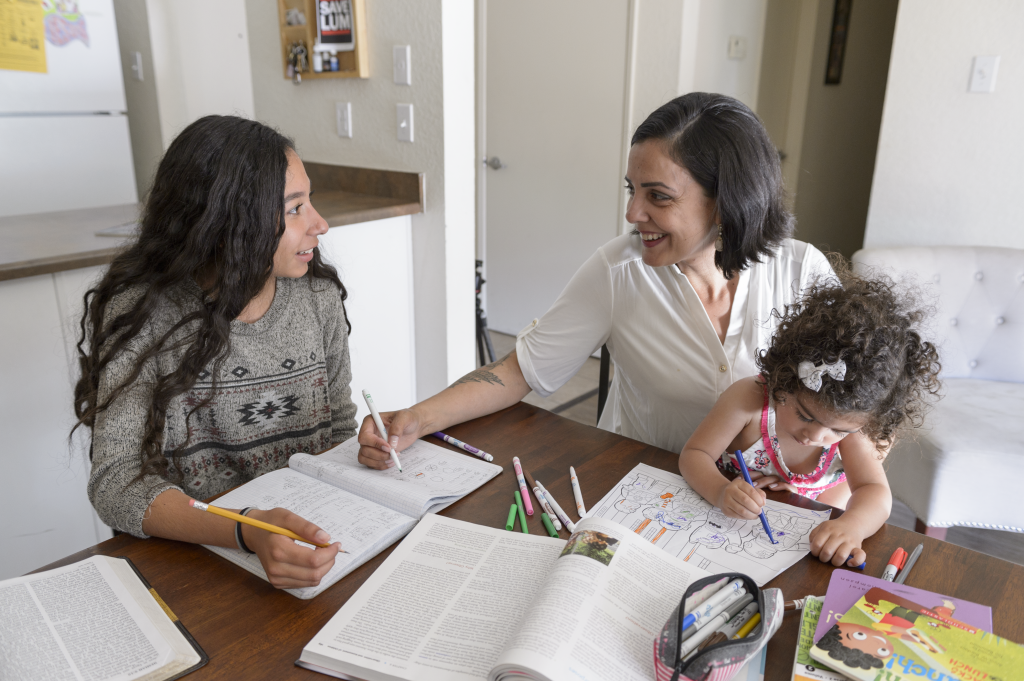Fernanda was able to learn English and participate in her children’s schooling through the Family Literacy Program

Fernanda Silva came to the U.S. from Brazil in 2015 along with her husband, two children and a baby on the way.
Although her husband Adriano spoke fluent English, she and her two children, Amanda and Gabriel, spoke and understood only Portuguese. The kids, Silva thought, would learn English quickly at school, but where did that leave her?
“I decided that my children would not be my interpreters, that they would not be ashamed to introduce me to their friends,” says Silva, 36. “I [became] dedicated to learning the language and focusing on my children’s school life.”
I decided that my children would not be my interpreters, that they would not be ashamed to introduce me to their friends.
Fernanda Silva
Family Literacy Program student, Alameda Adult School
She enrolled in adult ESL classes, but when third child Alice was born, she couldn’t bring the baby with her, and she began to lose hope.
Until, that is, her ESL teacher told her about the Family Literacy Program. Not only could Silva enroll in a class held at Gabriel’s elementary school, the program offered babysitting.
“This allows the parents to come to school while their children are in school,” says Beth Detwiler, an ESL Family Literacy Teacher.
The adult students read, write and speak English, and learn practical skills like shopping, making doctor’s appointments and calling the police. At the same time, there is a specific focus on helping them participate in their children’s education. They practice prior to teacher-parent conferences, PTA events and Open House.
“We [also] study units similar to what their children are learning, so they are better able to help with homework, understand the teacher’s expectations and … engage in their children’s classroom,” Detwiler says.
In fact, Silva has become a frequent chaperone for school field trips. “I could see how proud [my children] were of the fact that I was present and participating in their academic lives,” Silva says. “I was even invited to … give a quick lecture to first grade about Brazil — an unforgettable experience.”
Because of the program, parents are more involved and better able to communicate with teachers — both of which improve their student’s performance, Detwiler says.
But sometimes, it’s the younger students who are keeping an eye on their parents’ grades.
“I will have high school students come to check in with me to make sure their mom is turning in her homework or ask what they can do to help their parent in class,” Detwiler says. “I have loved watching parent-student pairs take on learning together.”
Written by Thea Marie Rood
| Regions | Classes & Topics |
|---|---|
| Bay Area California | English as a Second Language |